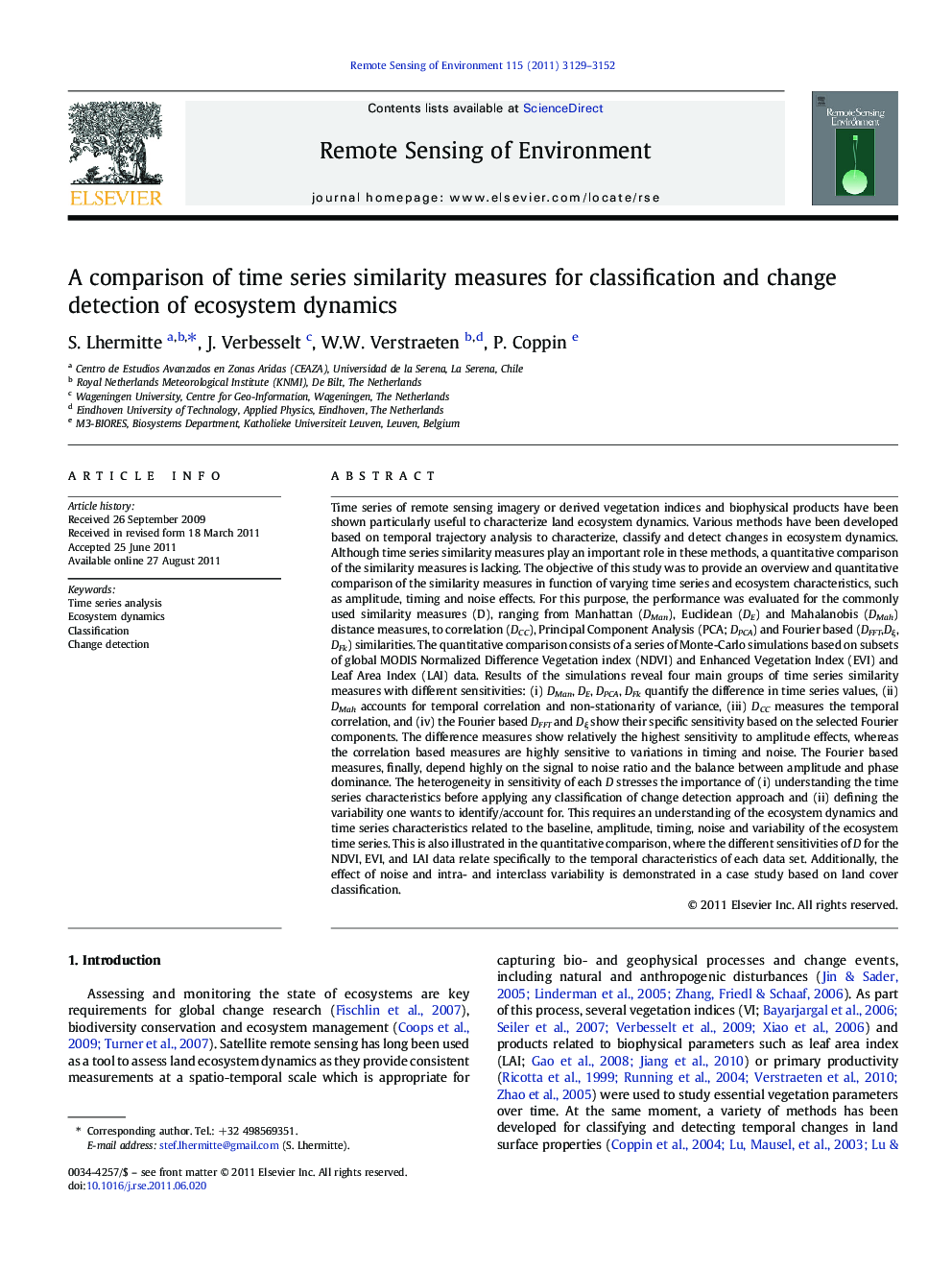| کد مقاله | کد نشریه | سال انتشار | مقاله انگلیسی | نسخه تمام متن |
|---|---|---|---|---|
| 4459466 | 1621285 | 2011 | 24 صفحه PDF | دانلود رایگان |

Time series of remote sensing imagery or derived vegetation indices and biophysical products have been shown particularly useful to characterize land ecosystem dynamics. Various methods have been developed based on temporal trajectory analysis to characterize, classify and detect changes in ecosystem dynamics. Although time series similarity measures play an important role in these methods, a quantitative comparison of the similarity measures is lacking. The objective of this study was to provide an overview and quantitative comparison of the similarity measures in function of varying time series and ecosystem characteristics, such as amplitude, timing and noise effects. For this purpose, the performance was evaluated for the commonly used similarity measures (D), ranging from Manhattan (DMan), Euclidean (DE) and Mahalanobis (DMah) distance measures, to correlation (DCC), Principal Component Analysis (PCA; DPCA) and Fourier based (DFFT,Dξ,DFk) similarities. The quantitative comparison consists of a series of Monte-Carlo simulations based on subsets of global MODIS Normalized Difference Vegetation index (NDVI) and Enhanced Vegetation Index (EVI) and Leaf Area Index (LAI) data. Results of the simulations reveal four main groups of time series similarity measures with different sensitivities: (i) DMan, DE, DPCA, DFk quantify the difference in time series values, (ii) DMah accounts for temporal correlation and non-stationarity of variance, (iii) DCC measures the temporal correlation, and (iv) the Fourier based DFFT and Dξ show their specific sensitivity based on the selected Fourier components. The difference measures show relatively the highest sensitivity to amplitude effects, whereas the correlation based measures are highly sensitive to variations in timing and noise. The Fourier based measures, finally, depend highly on the signal to noise ratio and the balance between amplitude and phase dominance. The heterogeneity in sensitivity of each D stresses the importance of (i) understanding the time series characteristics before applying any classification of change detection approach and (ii) defining the variability one wants to identify/account for. This requires an understanding of the ecosystem dynamics and time series characteristics related to the baseline, amplitude, timing, noise and variability of the ecosystem time series. This is also illustrated in the quantitative comparison, where the different sensitivities of D for the NDVI, EVI, and LAI data relate specifically to the temporal characteristics of each data set. Additionally, the effect of noise and intra- and interclass variability is demonstrated in a case study based on land cover classification.
► A quantitative comparison of time series similarity measures D is performed.
► Four groups of D with different sensitivities are obtained.
► Time series characteristics, noise and variability affect the performance of D.
► The sensitivities stress the importance of proper selection of similarity measures.
► Understanding time series properties is crucial for classification/change detection.
Journal: Remote Sensing of Environment - Volume 115, Issue 12, 15 December 2011, Pages 3129–3152